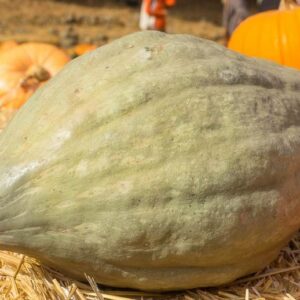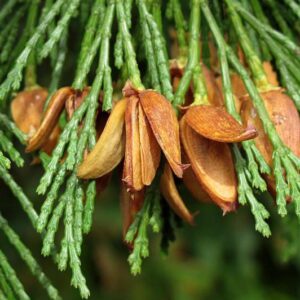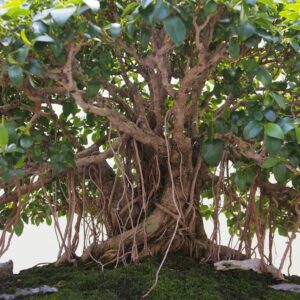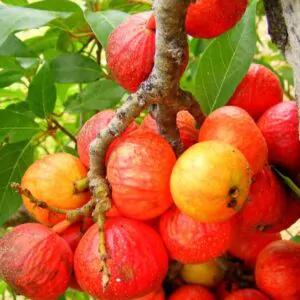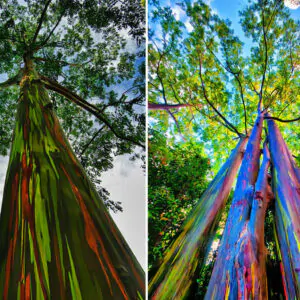$4.42
/ per pack
Choose seeds per pack:
Botanical nomenclature: Adansonia digitata / Baobabus digitata
Common name: African baobab
Country: Africa
Height: 20 meters high and 11 meters in diameter
Kingdom: Plantae
Clade: Tracheophytes
Clade: Angiosperms
Clade: Eudicots
Clade: Rosids
Order: Malvales
Family: Malvaceae
Genus: Adansonia
Species: A. digitata
Adansonia digitata, the African baobab, is the most widespread tree species of the genus Adansonia, the baobabs, and is native to the African continent and the southern Arabian Peninsula (Yemen, Oman). These are long-lived pachycauls; radiocarbon dating has shown some individuals to be over 2000 years old. They are typically found in dry, hot savannas of sub-Saharan Africa, where they dominate the landscape and reveal the presence of a watercourse from afar. They have traditionally been valued as sources of food, water, health remedies or places of shelter and are a key food source for many animals. They are steeped in legend and superstition. In recent years, many of the largest, oldest trees have died, possibly due to climate change. Common names for the baobab include monkey-bread tree, upside-down tree, and cream of tartar tree.
African baobabs are trees that often grow as solitary individuals, and are large and distinctive elements of savanna or scrubland vegetation. They grow from 5–25 m (16–82 ft) tall. The trunk is typically very broad and fluted or cylindrical, often with a buttressed, spreading base. Trunks may reach a diameter of 10–14 m (33–46 ft), and may be made up of multiple stems fused around a hollow core. The hollow core found in many tree species is the result of wood removal, such as decay of the oldest, internal part of the trunk. In baobabs, however, many of the largest and oldest of the trees have a hollow core that is the result of a fused circle of three to eight stems sprouting from roots. The bark is gray and usually smooth. Main branches can be massive. All baobabs are deciduous, losing their leaves in the dry season, and remaining leafless for about eight months of the year. Flowers are large, white and hanging. Fruits are rounded with a thick shell.
Flowering occurs in both the dry and the wet season. Buds are rounded with a cone-shaped tip. Flowers are showy and sometimes paired, but usually produced singly at the end of a 15-90 cm long hanging stalk. The calyx is typically made up of 5 (sometimes 3) green triangular bent-back lobes (sepals) with a cream-coloured, hairy interior. The petals are white, roughly the same width and length – up to 8 cm, and are crumpled in bud. Flowers open during the late afternoon, staying open and fertile for only one night. The fresh flowers have a sweet scent, but after about 24 hours, they start to turn brown and emit a carrion smell. The androecium is white and made up of a 3-6 cm long tube of fused stamens (a staminal tube) surrounded by unfused (free) filaments 3–5 cm long. There are a large number of stamens, 720-1600 per flower. Styles are white, growing through the staminal tube and projecting beyond it. They are usually bent at right-angles and topped with an irregular stigma. Pollen grains are spherical with spikes over the surface, typical of the Malvaceae family. Pollen grain diameter is around 50 microns.
The African baobab tree is one of the strangest in the plant kingdom (wonder of the world).
The same is for water during periods of drought.
Baobab is a deciduous tree, losing its leaves in the dry season. At the end of the dry season, the baobab blossoms with large white flowers that hang in a long, fresh wave to the unique spectacle in the evening, where they are pollinated by bats that feed on their nectar.
Mirror very drought tolerant, not needing water during the winter.
Despite its adaptation to dry climates, successful practice with much success in rainy climates provided it has a well drained soil and the possibility of a space to grow.
A real living sculpture, a splendor of nature.
As the seeds follow with their hand encounter.
| Weight | N/A |
|---|
